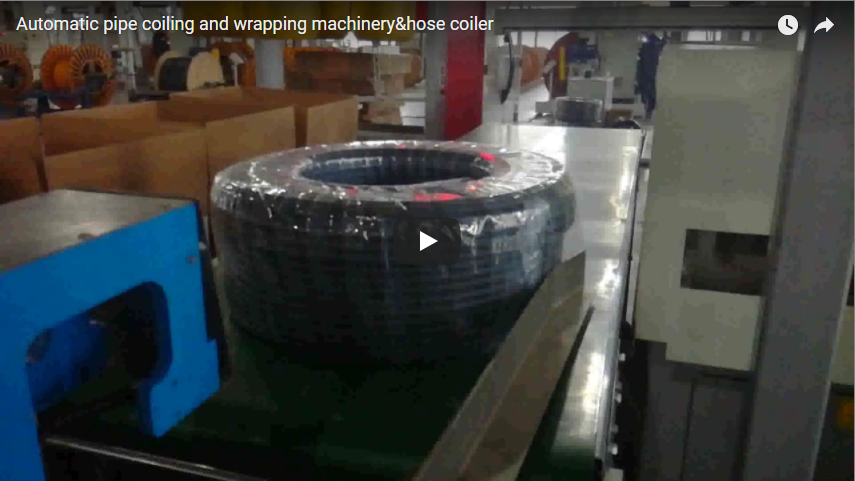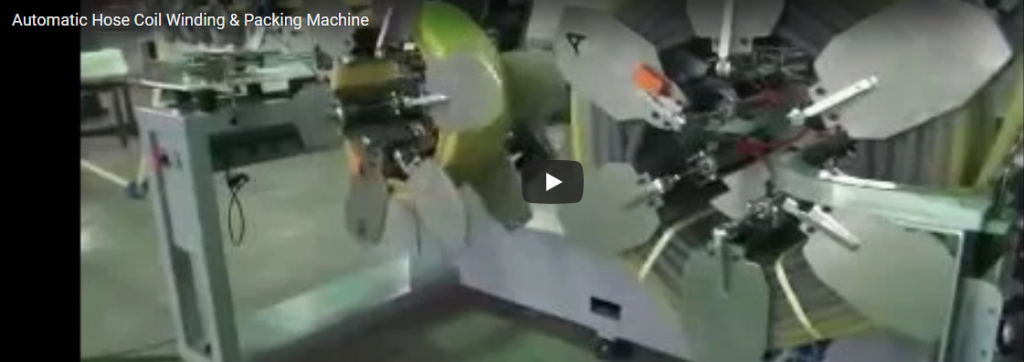In modern manufacturing and fabrication, ensuring product integrity during transit and storage is paramount. The Automatic Shrinking Machine, specifically designed for handling diverse formats like sheets, profiles, and boards, represents a significant leap forward in packaging automation. This visible-type system provides not only robust protection but also enhances operational efficiency through sophisticated control and reliable performance. Fabricators handling materials from sheet metal to extruded profiles and composite boards can leverage this technology to streamline their end-of-line packaging processes.
1. Addressing Packaging Challenges in Fabrication
Manual or semi-automatic wrapping processes often present challenges:
- Inconsistency: Achieving uniform tension and seal quality manually is difficult, potentially compromising product protection.
- Labor Intensity: Manual wrapping is time-consuming and requires significant labor allocation.
- Throughput Limitations: Manual processes create bottlenecks, limiting overall production output.
- Material Waste: Inefficient film usage and potential for errors can lead to increased material consumption.
An automatic shrinking machine directly tackles these issues by automating the feeding, sealing, cutting, and shrinking processes, ensuring repeatable quality at higher speeds.
2. Engineering and Design: A Closer Look
The effectiveness of this automatic shrinking machine stems from its thoughtful design and robust construction, tailored for industrial environments.
2.1. Structural Integrity
Built typically on a heavy-duty welded steel frame, the machine is designed for durability and stability during continuous operation. Powder-coated finishes provide resistance against corrosion and wear common in fabrication shops.
2.2. Material Handling System
- Infeed Conveyor: Often features non-marring rollers or belts suitable for delicate surfaces. Variable speed control allows synchronization with upstream processes.
- Sealing Area: Incorporates guides (sometimes self-centering) to position the product accurately before sealing.
- Heat Tunnel Conveyor: Usually employs heat-resistant belts (e.g., Teflon-coated fiberglass mesh or silicone rollers) to withstand high temperatures while transporting the product smoothly.
2.3. Sealing Technology
Most systems utilize an L-Bar sealer (forming seals on the front and side) or a continuous side sealer combined with an end-seal mechanism for higher throughput. Precision temperature control and adjustable pressure ensure strong, consistent seals across various film types and thicknesses.
2.4. Heat Tunnel Dynamics
The shrink tunnel is engineered for optimal heat distribution. Key elements include:
- Heating Elements: High-efficiency calrod heaters or finned strip heaters provide rapid, consistent heat.
- Airflow Management: Adjustable blowers and baffling systems ensure turbulent, omnidirectional hot air circulation, critical for uniform shrinkage on complex shapes like profiles.
- Insulation: Multi-layered insulation minimizes heat loss, improving energy efficiency and operator safety.
2.5. Control and Interface
A Programmable Logic Controller (PLC) forms the brain of the system, managing all sequences, timings, and temperatures. The Human-Machine Interface (HMI), typically a touchscreen panel, allows for intuitive setup, recipe storage, parameter adjustments (temperature, conveyor speed, seal time), and diagnostics.
3. Core Components and Advanced Features
This automatic shrinking machine integrates several key components delivering advanced functionality:
- Multi-Format Material Compatibility: Engineered to handle a wide range of product dimensions and types – from thin sheets to bulky profiles and stacked boards.
- Automated Feed Mechanism: Sensors detect incoming products, initiating the wrapping cycle automatically for seamless integration into production lines.
- Digital Temperature Control System: PID (Proportional-Integral-Derivative) controllers maintain precise tunnel and sealing temperatures (often within ±1-2°C), crucial for consistent shrink results and preventing film burn-through.
- Precision Cutting & Sealing Assembly: Ensures clean film separation and strong, reliable seals for package integrity. Features may include hot knife or impulse wire systems.
- Variable Speed Conveyor System: Allows operators to fine-tune the dwell time within the heat tunnel, accommodating different film types, product masses, and desired shrink levels.
- Integrated Sealing Mechanism: Combines film clamping, sealing, and cutting into a synchronized operation for efficiency.
- Adjustable Tunnel Dimensions: Some models offer adjustable tunnel heights or side guides to accommodate varied product sizes effectively.
- Smart Temperature Regulation: Systems may feature automatic temperature adjustments based on line speed or product type, optimizing energy use.
- Automated Material Sensing: Optical sensors detect product length and position, ensuring accurate film dispensing and sealing placement, minimizing film waste.
- Continuous Operation Capability: Designed for 24/7 operation in demanding industrial settings.
- Self-Centering Guide System: Automatically aligns products as they enter the sealing area, ensuring consistent wrap placement.
- Energy-Efficient Heating Elements & Insulation: Modern designs focus on reducing power consumption through efficient heat transfer and minimizing thermal loss.
4. Technical Specifications Overview
While exact specifications vary by model and manufacturer, typical ranges for such machines include:
| Parameter | Typical Range / Feature | Notes |
|---|---|---|
| Max Product Size (LWH) | Varies widely (e.g., up to 2000x800x400 mm) | Check specific model capabilities |
| Max Film Width | 600 mm - 1000 mm+ | Determines max product perimeter |
| Tunnel Dimensions (LWH) | e.g., 1500 x 900 x 500 mm | Affects max product size & dwell time |
| Conveyor Speed | 5 - 30 meters/minute (variable) | Impacts throughput & shrink quality |
| Temperature Range | Ambient to 200°C+ (adjustable) | Suitable for various film types (PE, POF) |
| Sealing System | L-Bar / Side Seal + End Seal | Side seal often allows unlimited length |
| Power Requirements | 3-Phase, 220V/380V/480V, 15-50 kW | Depends heavily on tunnel size & speed |
| Air Requirements | 6-8 Bar (if pneumatic components used) | For actuation of seal bars, clamps |
| Supported Film Types | Polyethylene (PE), Polyolefin (POF) | Thickness typically 15-100 microns |
| Output Capacity | 10 - 60+ packs per minute | Dependent on product size & film |
| Control System | PLC with Touchscreen HMI | Standard for modern automated machinery |
Note: Always consult manufacturer documentation for precise specifications.
5. Operational Insights: A Fabricator's Experience
From a user perspective, operating this type of automatic shrinking machine offers significant advantages over manual methods.
- Setup & Changeovers: Modern HMIs simplify setup. Storing recipes for different products/films allows for quick changeovers, minimizing downtime. Adjusting guides, conveyor speed, and temperatures can usually be done via the touchscreen.
- Running Production: Once set, the machine runs consistently. Sensors monitor product flow and film status, often alerting operators to issues like low film or film breaks. The "visible type" aspect, often referring to clear guarding or viewing windows into the tunnel, allows operators to monitor the shrinking process easily.
- Achieving Quality: The key challenge is balancing temperature, airflow, and conveyor speed to get a tight, uniform shrink without overheating the product or film. The precise digital controls are essential here. Experience helps in fine-tuning parameters for specific product geometries, especially complex profiles.
- Maintenance: Routine maintenance typically involves cleaning sealing elements, checking conveyor belts/rollers, inspecting heating elements, and ensuring sensors are clear. Well-designed machines offer good access for these tasks. Troubleshooting guides are usually integrated into the HMI.
The consistency provided by automation eliminates the variability inherent in manual wrapping, leading to a more professional final product appearance and reliable protection.
6. Applications Across the Fabrication Industry
The versatility of the automatic shrinking machine makes it suitable for various fabrication-related applications:
- Metal Fabrication: Bundling extruded aluminum profiles, wrapping stacks of sheet metal blanks, protecting finished components from scratches and dust.
- Woodworking: Packaging finished cabinet doors, stacks of lumber or planks, furniture components.
- Plastics Industry: Wrapping stacks of plastic sheets, protecting molded parts, bundling extruded plastic profiles.
- Building Materials: Packaging insulation boards, bundles of siding, window frames, composite decking materials.
- Distribution & Logistics: Preparing bulk items or consolidated orders for shipment, providing tamper evidence and weather protection.
Conclusion: Enhancing Protection and Productivity
The automatic shrinking machine for sheets, profiles, and boards is more than just a packaging device; it's an integral component of an efficient, modern fabrication workflow. By offering precise control, high throughput, consistent quality, and operational flexibility, it delivers tangible benefits:
- Improved Product Protection: Shields against dust, moisture, and handling damage.
- Enhanced Throughput: Significantly faster than manual methods, alleviating bottlenecks.
- Reduced Labor Costs: Frees up personnel for higher-value tasks.
- Material Savings: Optimized film usage and reduced errors minimize waste.
- Professional Presentation: Consistent, high-quality wrapping enhances product appeal.
For fabricators looking to improve their packaging processes, investing in an advanced automatic shrinking system offers a clear path towards increased efficiency, better product protection, and a stronger bottom line. Consider exploring resources from industry bodies like PMMI (The Association for Packaging and Processing Technologies) for further insights into packaging automation standards and best practices.






